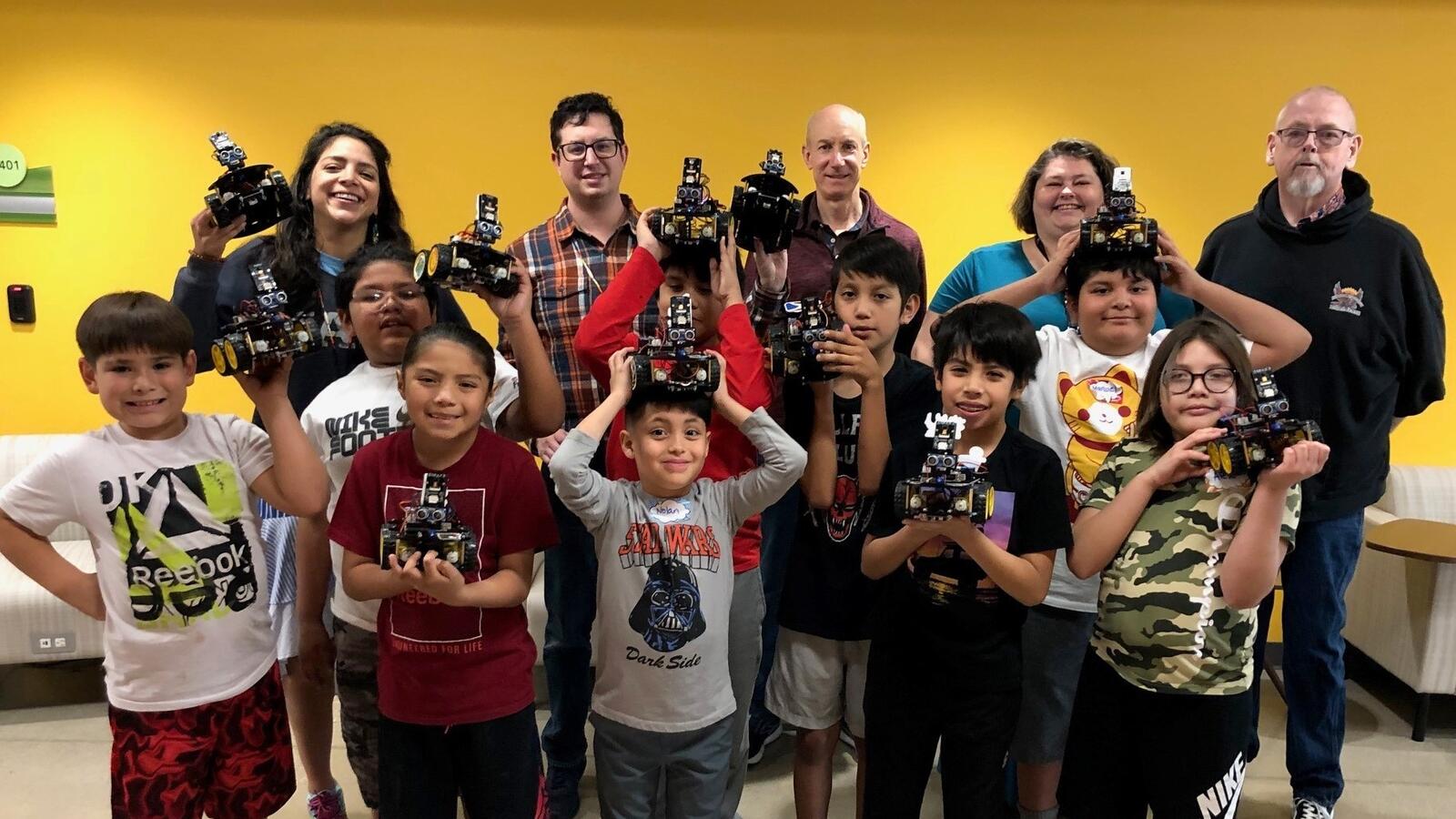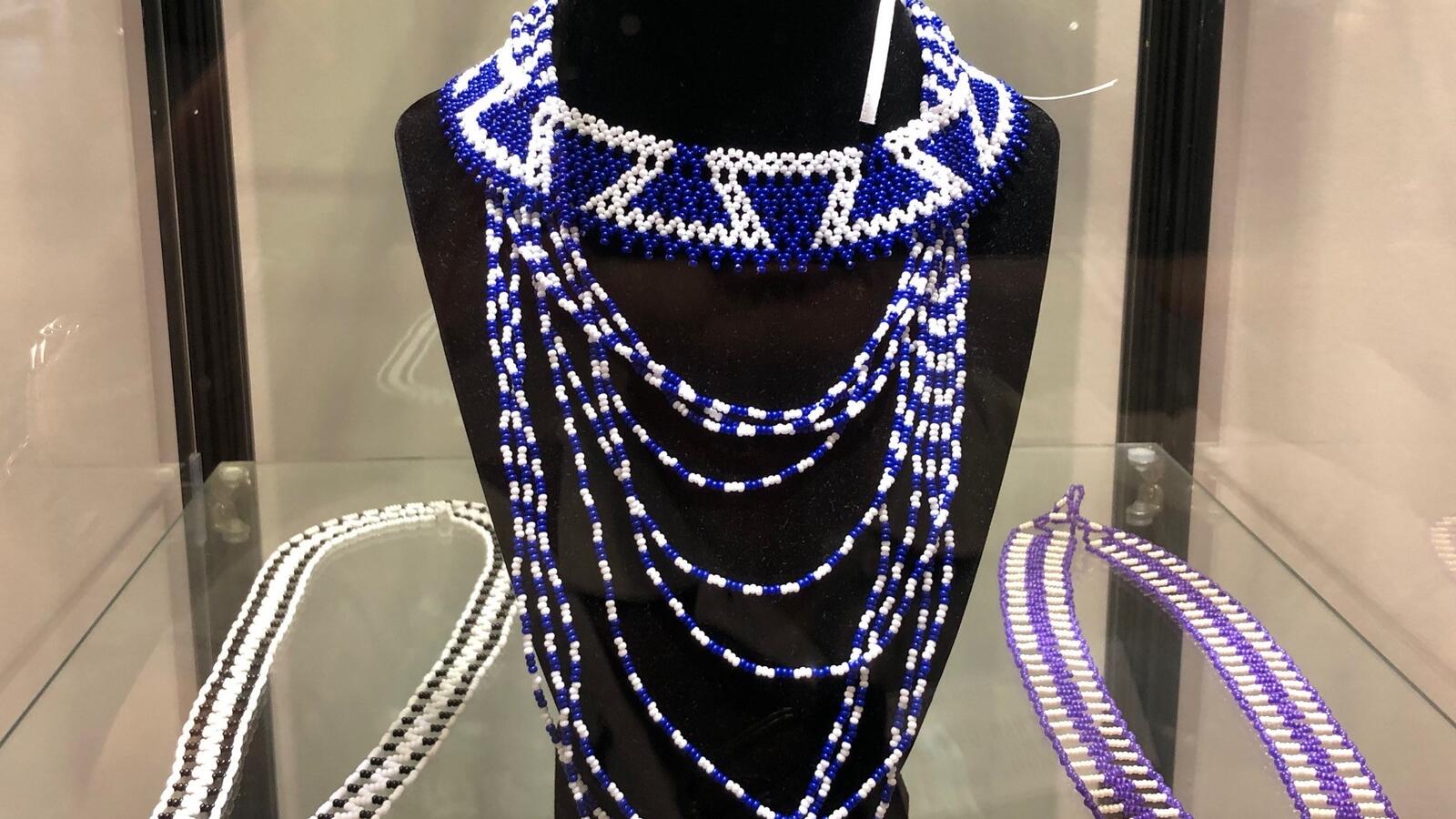Over 30 members of the Yale community – mostly alumni, but also faculty, staff, students, and affiliates – recently participated in an intercultural service program through the Yale Alumni Service Corps (YASC) in partnership with the Fort Mojave Indian Tribe, a federally recognized Native American community of roughly 1,400 people whose reservation encompasses nearly 24,000 acres and intersects California, Arizona, and Nevada.
The weeklong program, first hosted at Fort Mojave in 2017, involved YASC volunteers and designated tribal liaisons working together to offer learning and experiential activities to local students and children in specific project areas—education, fashion/design, dance, fitness/sports, robotics, and financial literacy.
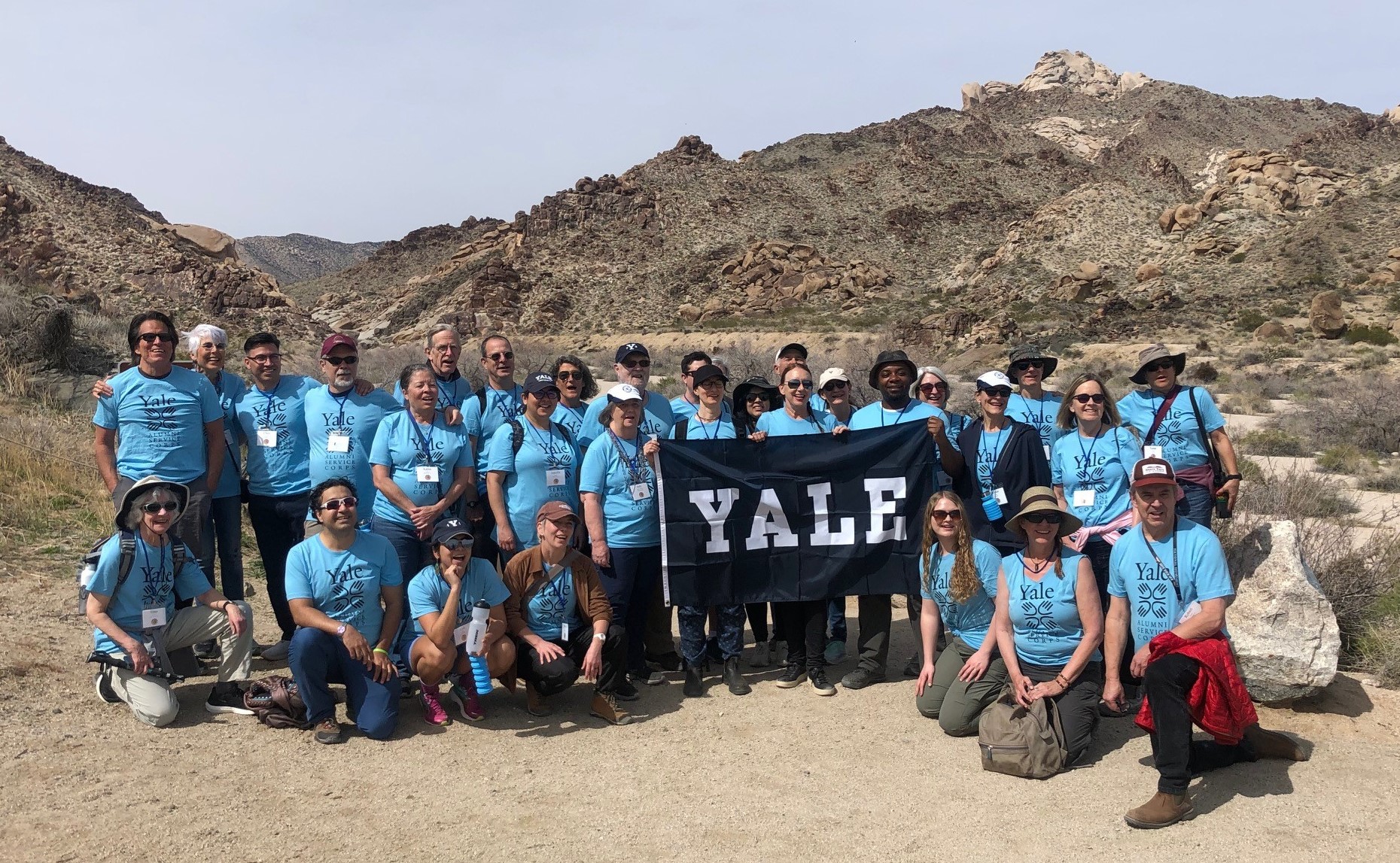
Additionally, volunteers had opportunities to learn about Mojave history, culture, traditions, values, and customs. A highlight for the group included a guided visit to Avi Kwa Ame (pronounced Ah-VEE kwa-meh), a large desert area in southern Nevada named after an iconic peak (called Spirit Mountain) and considered one of the most sacred spaces for the Tribe and other Native communities—Avi Kwa Ame was declared a national monument and listed in the National Register of Historic Places in 2023.
According to Joao Aleixo, director of service programs at the Yale Alumni Association, the intent behind YASC, an alumni-driven initiative established in 2008, is to foster close, enduring relationships with different communities around the world, including within the United States, and promote opportunities for mutual learning, discovery, and service. Like other YASC programs, the one in Fort Mojave was structured along these lines.
“We hope the volunteers gained a better awareness and understanding of tribal sovereignty and other important Native and Indigenous concerns and matters,” he said. “We also hope they were able to share knowledge and experiences that benefitted the community.”
Aleixo added that, having coordinated and staffed many YASC trips, he is continually impressed by the service-minded orientation of alumni, and what he saw at Fort Mojave reaffirmed this.
“It’s always inspiring to witness alumni from different backgrounds and parts of the world coming together to make a difference,” he said. “It was quite rewarding to see the smiles on the faces of the children and youth we served during the program.”

Ashley Hemmers ’07, tribal administrator of the Fort Mojave Indian Tribe and chair of Native American Yale Alumni, a shared interest group that connects and serves the Yale Native community, who played an instrumental role in making the YASC Fort Mojave partnership possible, said she was delighted her community was able to host the program and offer volunteers experiences and insights that are rarely available to non-tribal members.
“Federally recognized Indian tribes have a unique government-to-government relationship with the United States that is often far removed from the daily news cycle,” she said. “The YASC trip was a way to share the history of what this relationship looks like for my Tribe, the impact federal and state policies have had on my people, and our response to building a stronger community through it all.”
For Hemmers, the connection between Fort Mojave and Yale held special meaning for her.
“I am the only Mojave to attend and graduate from Yale. When I find myself walking into alumni conversations about the importance of supporting diverse communities, it takes on a different meaning when you are the only one,” she said, adding that she welcomed seeing others from Fort Mojave matriculate to Yale, as well as further collaborations between Yale and the Tribe. “I hope that my community can see that Yale can be a space for them too.”

Max Sklar ’06, who was the trip producer of the first YASC Fort Mojave program and returned on the second trip as a member of the robotics project team, said that the progress made by the Tribe since he first set foot on the reservation six years ago was noticeable.
“I saw the community’s investment in their language and cultural traditions, and I felt that the kids that I was working with will have something very unique and special about themselves and the community in which they grew up,” he said.
A software engineer and adjunct university lecturer, Sklar found it gratifying to work with and assist students in building and programming smart robotic cars.
“I hope the students had a positive learning and social experience while building and coding their robots,” he said. “I hope that it built some confidence, and that they might be more inclined to take on similar projects in the future.”
Billy Earnest Jr., a teacher at the Anya Itpak Pre-K & Elementary School where the robotics team was based, and who served as the team’s liaison, was hopeful that interacting with alumni would further motivate students to prioritize their education and pursue opportunities for higher learning.
“My wish for our kids is for them to always pursue learning to make their lives the best they can be—some of them have no idea how much college can take them to a better life,” he said. “Seeing all the volunteers building bonds with them allows me to keep the students focused on pursuing their dreams and to continue learning.”
An educator for 20 years, Earnest said he had never encountered a program such as YASC but was grateful to be a part of it.
“It completely surprised me that Yale alumni would come all the way to Fort Mojave to work with our students,” he said. “The opportunity to work alongside them was a great honor for me.”
Julia Bailey ’96 PhD, co-leader of the fashion/design project team, which was based at the Pipa Aha Macav Cultural Center, recounted the many joyful moments working with community youth in crafting dresses, vests, skirts, and other outfits—these were put on display during a live in-person fashion show held at the end of the program.
“It was an incredible feeling to be part of that process,” she said. “Kids as young as six made ribbon skirts and shawls for their first time sewing. After each child completed sewing their outfit, they put them on and the whole room clapped and cheered as the artist beamed a smile wearing something they created.”
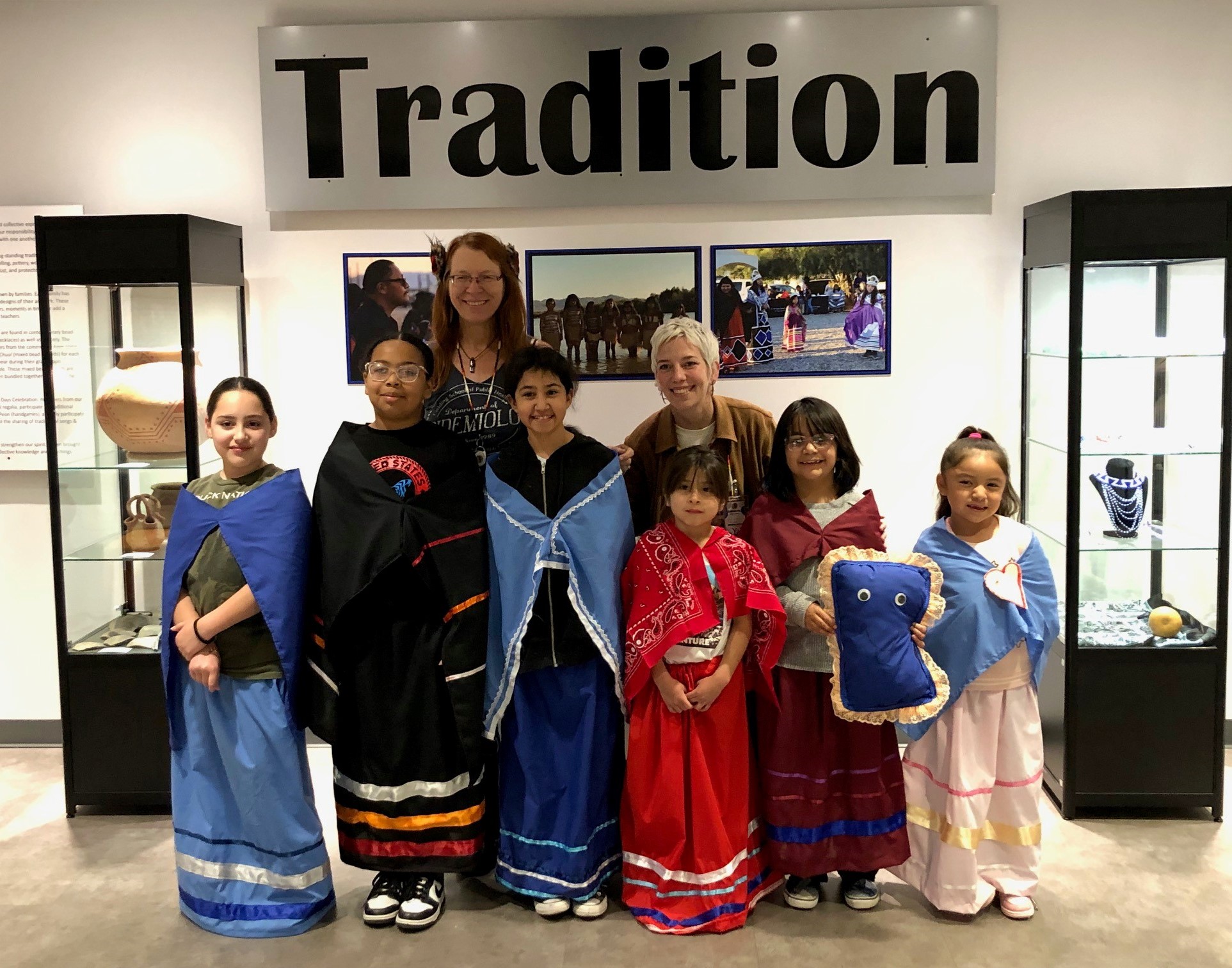
Bailey, an adjunct university professor in epidemiology based in Los Angeles and the proprietor of an online business that produces historical and religious outfits, shared what she found most meaningful from her YASC experience.
“My biggest takeaway is the connection I made with the community members I worked with,” she said. “We are going to keep in touch—I will go back for additional workshops, and they will visit me for workshops and trips to the Los Angeles fabric district.”
Jessica Niles DeHoff ’04 MArch, the other co-leader of the fashion/design project, experienced special moments of her own.
“For much of the time, our sewing studio was pretty crazy, with kids coming and going, teachers and parents joining in the fun, and piles of materials everywhere,” she said. “But one morning there was a lull, and I got to spend a solid hour with a very young girl as she pieced together her first-ever sewing project: a ribbon skirt, traditional dancewear for her tribe. It was so meaningful to see this heritage taking root in a new generation.”
A visual artist, writer, and educator who has taught design at universities in Japan, China, and the United States, and recently relocated to Virginia after living in Asia for 15 years, Niles DeHoff appreciated the opportunity to work with the community to preserve their needlework traditions.
“We were asked to assist in teaching sewing skills, as there were concerns these skills were dying out in the Tribe,” she said. “I hope I was able to impart even more to the students—not just a working knowledge of the craft, but also permission to be fearless experimenters, to look for new solutions to familiar problems, to ask questions, and to stand up for their own creative visions.”

Sherry Hemmers, supervisor of culture preservation at the Pipa Aha Macav Cultural Center and the tribal liaison to the YASC fashion/design project team, witnessed firsthand the collaboration between the volunteers and the students.
“The kids really enjoyed working with the volunteers, and the whole team had so much fun designing and opening up their creative minds,” she said. “I hope that the students will continue the knowledge they learned in the workshop and run with it.”
She noted that having volunteers with similar upbringing as the students made it easier for them to establish a closer rapport.
“The students related to them on many levels because they came from similar backgrounds, including growing up in single-parented homes,” she said. “The volunteers were open about their struggles fitting in at a big institution and were encouraging in helping our children understand that they could do anything.”
Additionally, she hoped that volunteers picked up valuable insights about Fort Mojave.
“I hope they understand more about the inner workings of our Tribe and the necessary changes we are making on our reservation,” she said, adding that more learning opportunities for Fort Mojave youth would benefit both them and the Tribe. “We need our younger generation to gain knowledge of the outside world and bring it back to protect our people.”
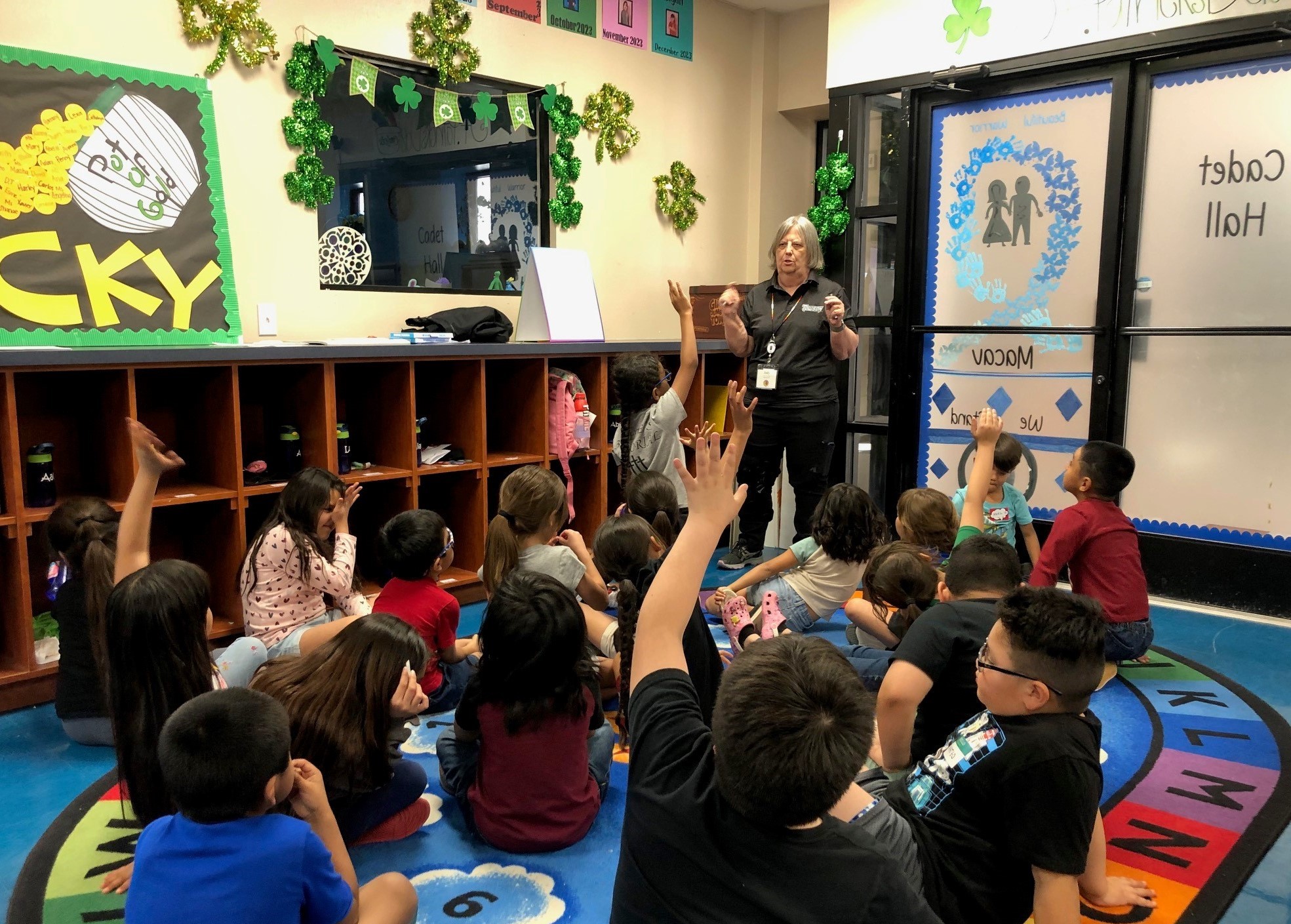
Judy Kessen Crawford ’76, a retired schoolteacher who has participated in over 10 YASC service trips and served as the project leader of the financial literacy team, based at Fort Mojave’s Boys & Girls Club of Aha Macav, initially harbored concerns about what she and the other volunteers could accomplish in the limited time they had.
“With students ranging in ages from six to 13 years old, I hoped that they were comfortable with the volunteers, engaged by the activities, and able to carry forward not only knowledge of financial literacy but positive memories of our time spent together,” she said. “I believe that we did achieve these goals.”
Robert Svikhart ’85 MBA, a member of the financial literacy team, echoed similar misgivings and aspirations.
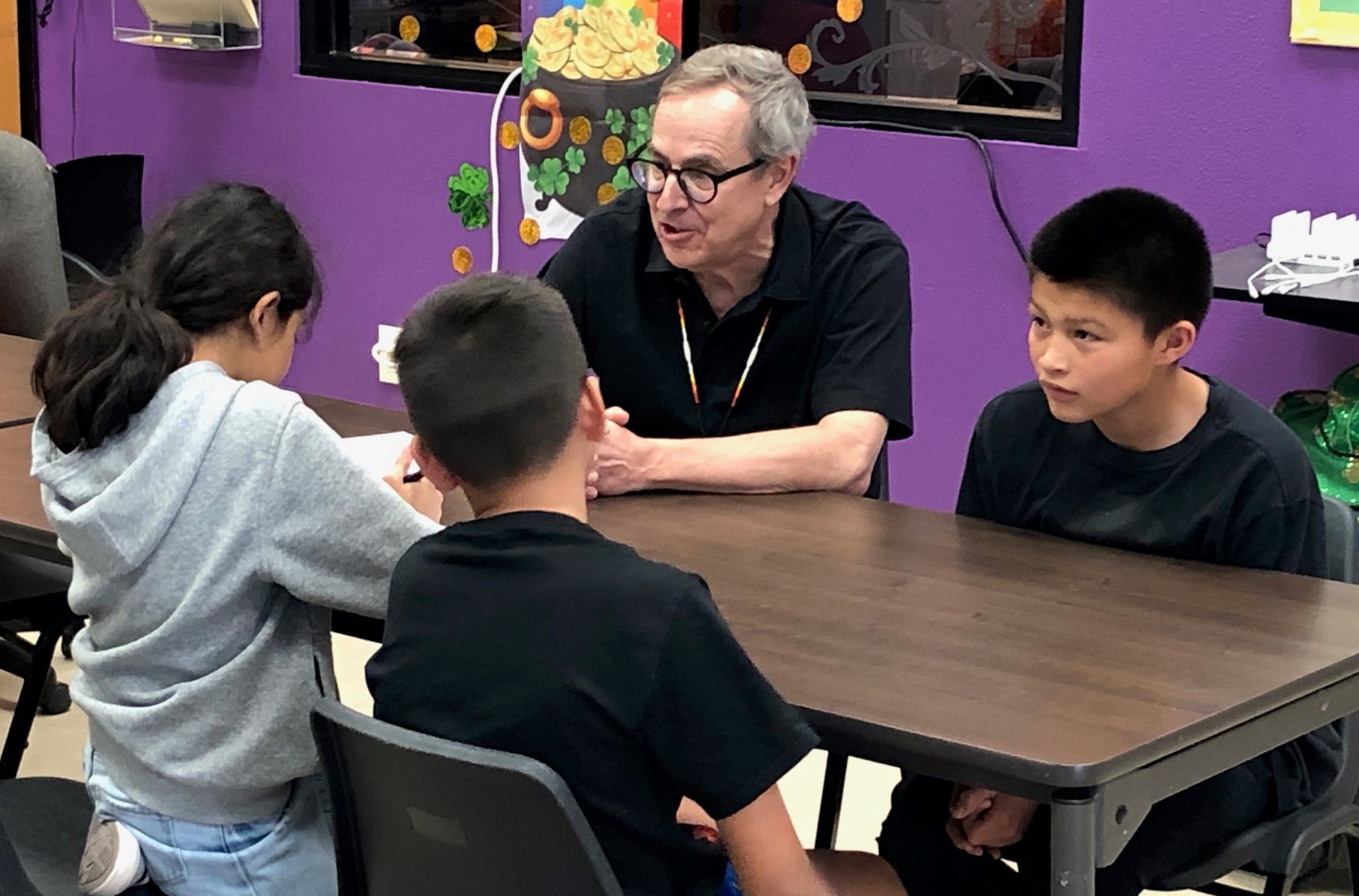
“I hope our interactions with the kids helped to broaden their view of the world—they were a joy to meet,” he said, adding that the relationships formed with other Fort Mojave community members were equally important. “I also hope that they viewed us as allies.”
A retired financial services professional, Svikhart said he cherished the opportunity he and a few other volunteers had to engage in a friendly sporting competition with senior community members.
“My most memorable experience at Fort Mojave was competing against a team of tribal elders in what was for us our first game of sitting volleyball,” he said. “We dropped three straight games on their home court…and had so much fun.”
Karen Cabanillas, the executive head of the Boys & Girls Club of Aha Macav, and the tribal liaison to the financial literacy team, noted she was impressed by the adaptability and efforts of the volunteers.
“I was amazed at how calm and patient the volunteers were with the children in teaching them financial literacy,” she said, noting that the students gained more from them than just technical knowledge. “They learned that there is so much out there for them to step out into the world.”
Cabanillas emphasized how deeply invested the community was in seeing the youth of Fort Mojave have brighter futures.
“For now, our children are snuggled safely on their homelands surrounded by our protecting mountains and the river that runs alongside,” she said. “And maybe someday they will attend Yale University when they are ready to pursue their higher education goals.”
Like many YASC trips, the one at Fort Mojave included a strong educational component.
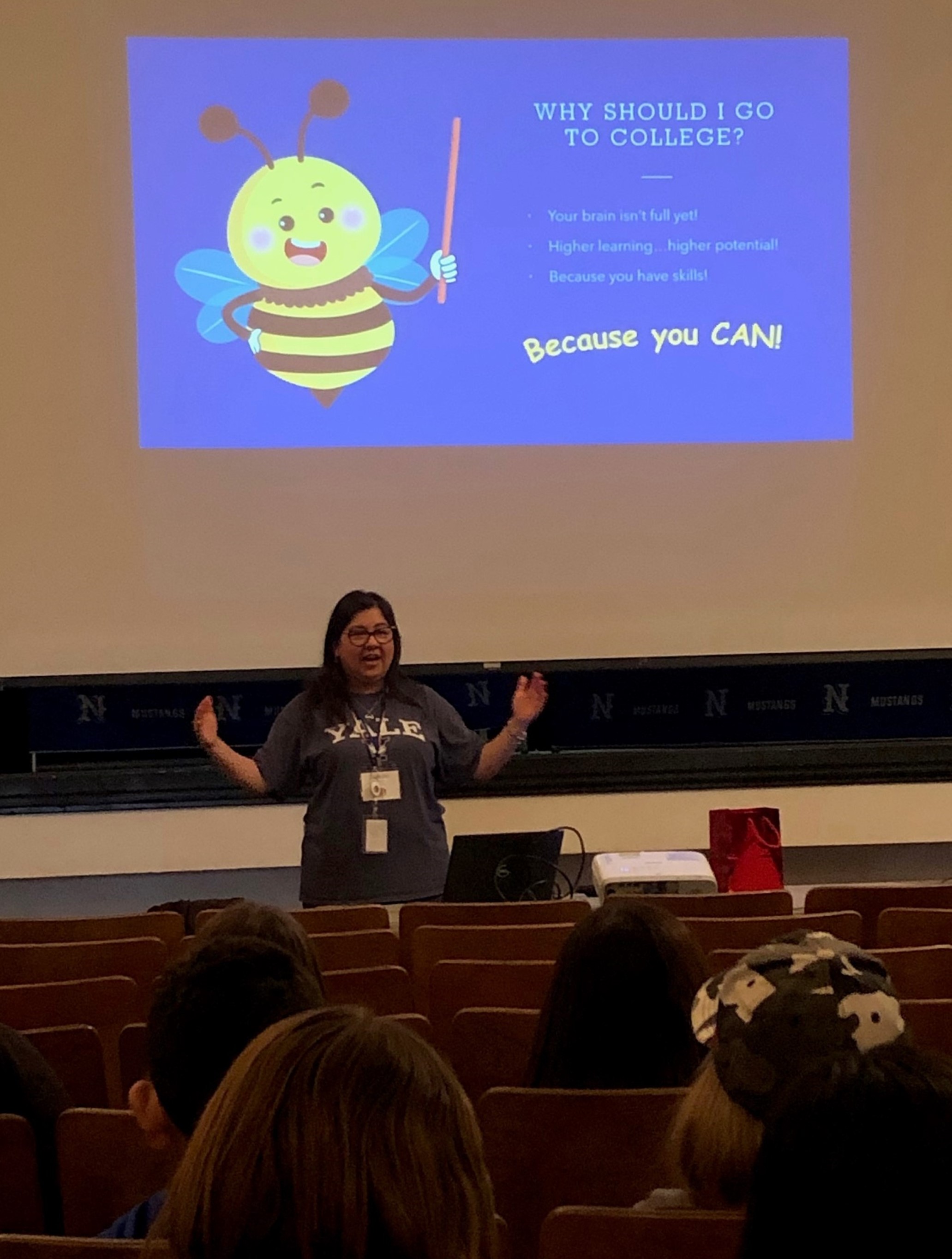
Jennifer Rendon ’20 DNP, a member of the education project team, which offered multiple college information and mentoring sessions to students of different ages and grade levels, recalled one of her many positive interactions.
“I met with high school juniors to talk about the resources available to help students explore different colleges and the programs they offer,” she said. “I told one of the boys who wanted to join the Marines about the college ROTC programs that allow students to get an education and then enter the armed forces as a commissioned officer. I will never forget the look on his face. His eyes lit up and he smiled, and I thought, “This is why I came on the trip.’”
An assistant professor of nursing based in Canyon Lake, Texas, and the co-founder of a nonprofit organization dedicated to the conservation of the Lake and its surrounding parks, Rendon added that the mission of YASC resonated strongly with her.
“The people who make up YASC are a force for change—we come from such diverse backgrounds and from all over the world but our connections to Yale make us a family,” she said. “There is a lot of work that needs to be done in this world, and YASC is doing this and is effective at this work.”
Connie Spencer ’82 MArch, an architect with her own practice and a YASC volunteer for over 10 years, who led the fitness/sports project, said she is continually surprised by her experiences on the service trips.
“What I have learned on trips with YASC is that you can never know the example you may give as a volunteer or the influence you might have on a student or adult who you have interacted with,” she said. “But it will be valuable.”
For Spencer, the YASC Fort Mojave trip was no different.
“I had a student tell me he wanted to be an architect after seeing my presentation about opportunities for careers in architecture,” she said. “Several students in the fashion class said they also wanted to be architects since one of the volunteers was also an architect—a profession they might not have known about before, so it opened their horizons!”
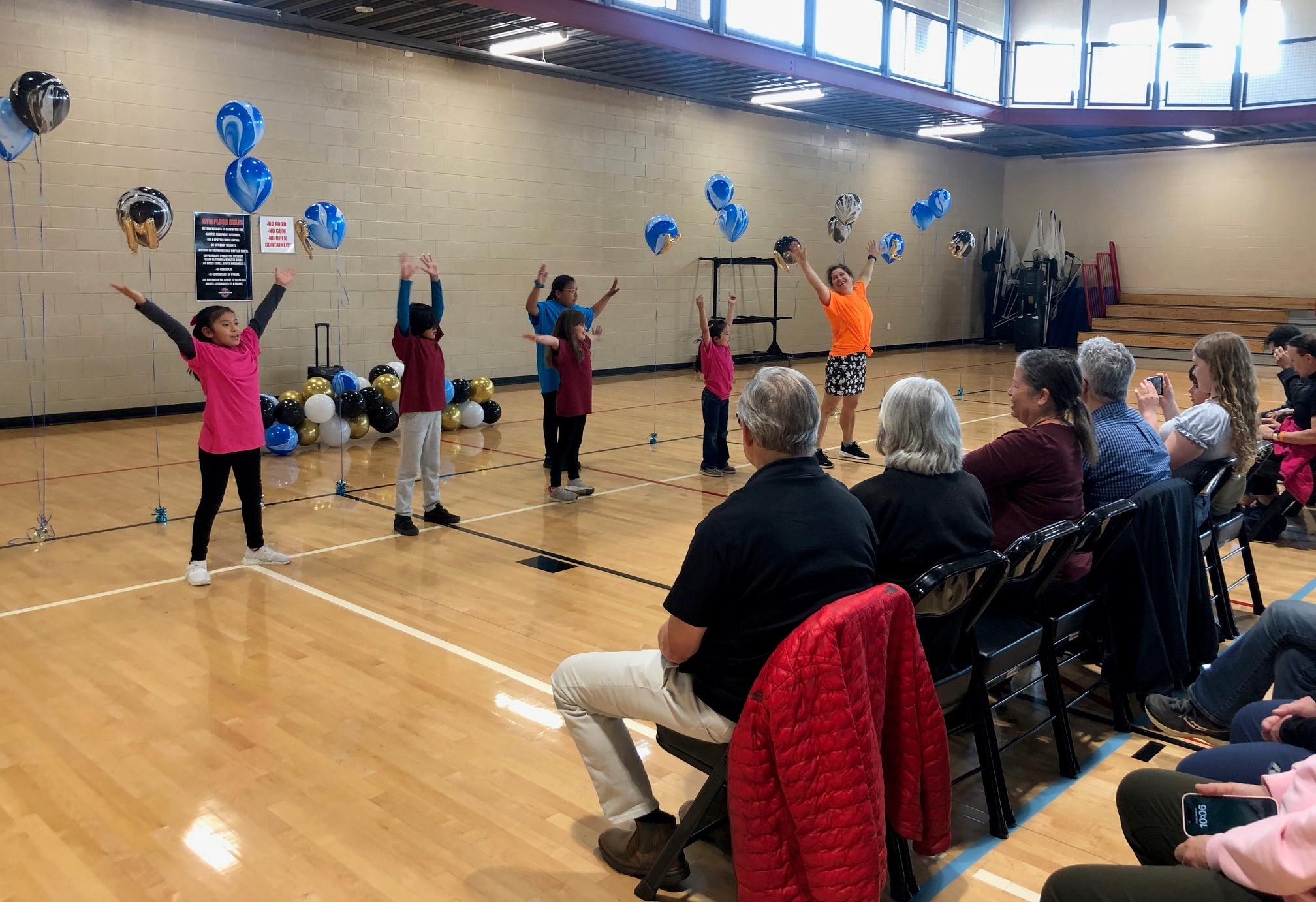
Susan Sweedler, who led the dance program, and is a Yale spouse and parent with over 15 years of experience in the fitness industry as a personal trainer and spin instructor, gained a lot personally from serving as a YASC volunteer.
“I got much more from this trip than I gave,” she said. “Watching the kids learn the dances, interact with me and each other, and shine in the [final group] performance was an absolute thrill.”
Like other volunteers, Sweedler experienced her share of special moments.
“One of my most memorable experiences was watching ‘my littles’ [eight girls ages five to 11] present the four dances they learned over three days. The smiles on their faces were infectious,” she said. “With my 17-year-old dancer [who had a hearing disability], we spent her last afternoon dancing for 2½ hours straight. When we said good-bye, there were hugs, tears, and the hand sign for ‘I love you.’”
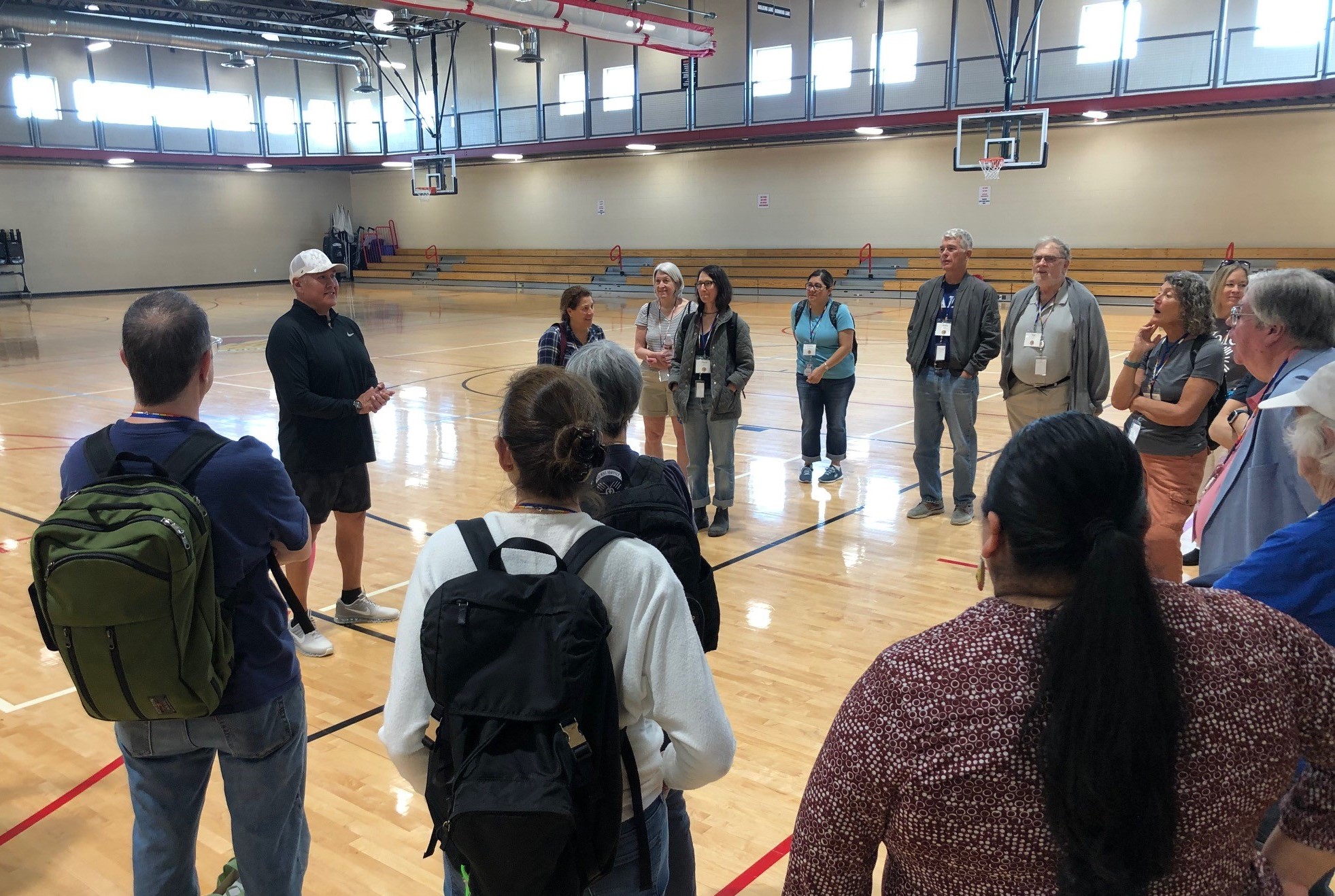
Shawn Lewis, director of the Fort Mojave Wellness Center, where the fitness/sports and dance project teams were based, noted the positive response from the students.
“It was wonderful watching the kids come out of their comfort zone, experience new things, and participate with a smile on their faces,” he said. “I hope the community recognized that these volunteers came out to share their time and expertise to expand our youth’s horizons.”
Likewise, Lewis hoped the volunteers learned something valuable about the community.
“I hope the volunteers gained an understanding of our focus on our elders and youth within our community,” he said. “The elders are the ones who paved the path where we are today, and the youth are our future. Those in the middle are the ones who keep things afloat.”
Brooklyn Brauner, a Yale College sophomore (Class of 2026) who served as the social media intern on the Fort Mojave trip and had worked as a YASC student employee for over a year, said she enjoyed engaging with students and young community members and sharing with them her experiences, including at Yale.
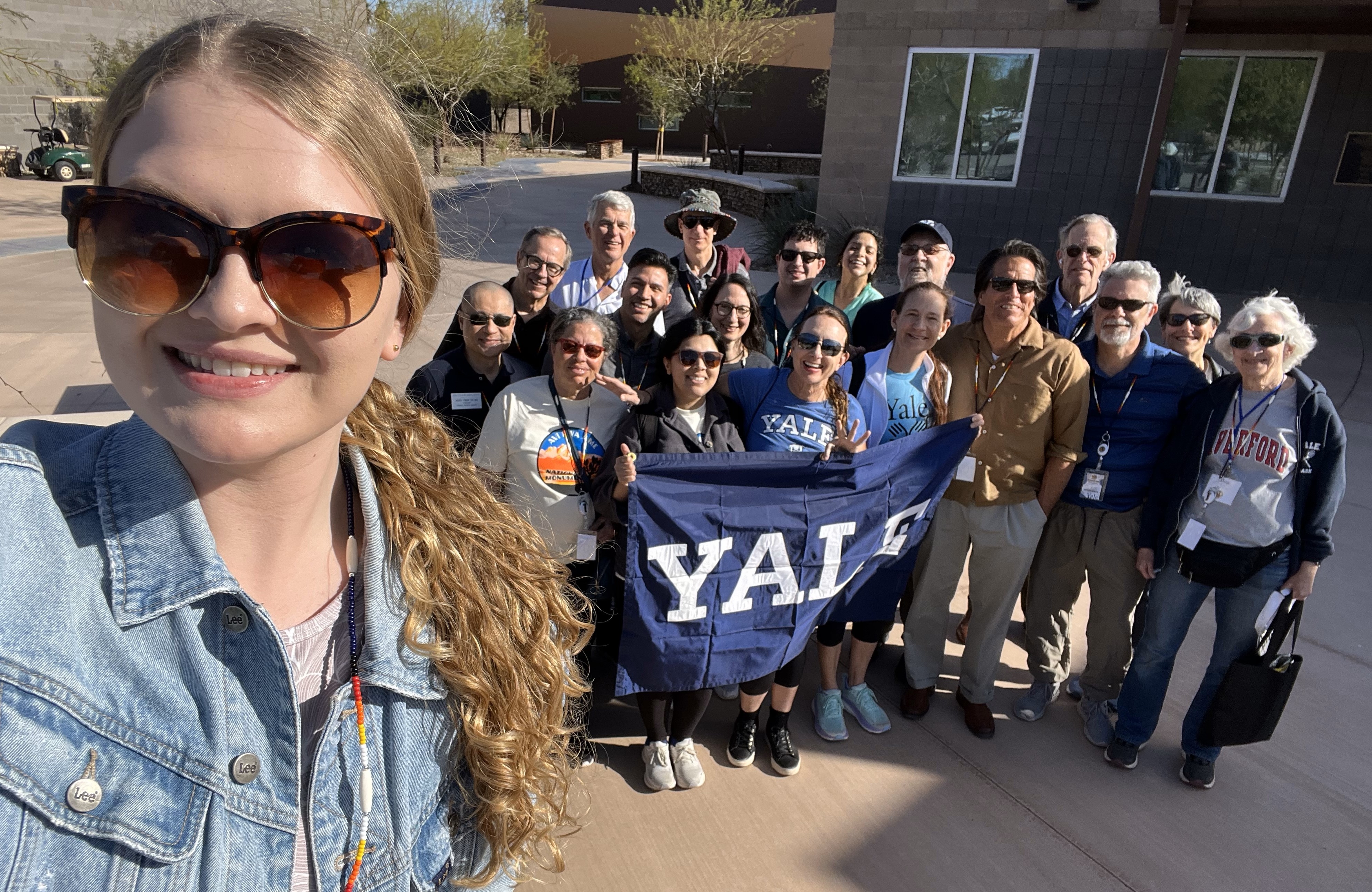
“I’m glad I had the opportunity to demystify elite institutions like Yale by adding a bit of humility, humor, and compassion to the big corporate name,” she said. “I especially wanted to ease the older students’ minds about applying to college and preparing to leave home for the first time.”
At the same time, Brauner emerged from the Fort Mojave trip with a better understanding of Native and Indigenous concerns and issues.
“My biggest personal takeaway from the trip was becoming more familiar and comfortable with tense historical topics through conversations with Fort Mojave residents and staff,” she said.

According to Rick Chavolla, an educator for over 35 years who has directed centers and initiatives to advance racial and cultural diversity and taught classes at different colleges and universities, including five years at Yale, where he was assistant dean of Yale College and director of the Native American Cultural Center, the YASC Fort Mojave trip offered something truly rare in higher education.
“I hope the YASC participants understand that their experience at Fort Mojave is a window into an Indigenous tribal nation that few non-Indigenous people get to have,” he said. “Consequently, this means they have a responsibility to continue to learn about Indigenous history, Nations, sovereignty, and the impact of colonialism, and find some way to keep giving back to the original peoples of this land.”
